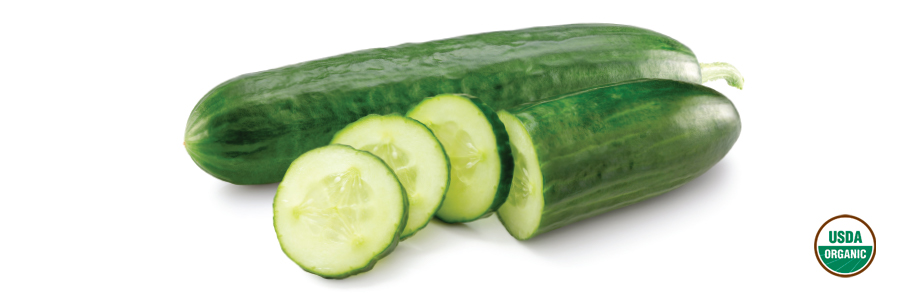


Sign-up for {N}power to get exclusive discounts, newsletters, members-only features, and more!

They say a Roman Emperor loved this veg so much he built portable greenhouses so it could be served to him every day.1 While some historians have debunked this lore, here’s one thing we know is true—whether it’s in a salad, a sandwich, or brined with dill, there’s nothing as cool as a cucumber!2 Let’s bite into some reasons you’ll want organic cukes on the menu this July.

Refresh your skin all summer long with the hydrating, complexion-loving cucumber. It’s rich in antioxidants, including vitamin C, and it contains silica, which has been shown to support skin firmness and reduce brittleness in hair and nails.3 4 One study also found strong anti-hyaluronidase and anti-elastase activity in cucumber juice, which is great news for aging skin.5 Here’s why: hyaluronidase and elastase are enzymes contributing to the breakdown of hyaluronic acid and elastin, two critical components of skin elasticity that we lose over time.6 7 8 Now who’s ready for a tall glass of cucumber water on a hot summer afternoon?
Even the coolest of cukes doesn't exist without a little help from its friends, the bees. This crop depends on bees for pollination, yet most conventional field cucumbers grown in the US rely on a well-established pollinator hazard—neonicotinoid-coated seeds.9 In 2012, reports show that one of the world's largest seed companies, Syngenta, began treating all its primary North American cucurbit seeds (cucumber, watermelon, pumpkin), including open-field cucumbers, with FarMore® technology. What is it? A treatment featuring the neonicotinoid thiamethoxam, along with multiple fungicides, and here’s how such seeds may affect wild bees.10 11 12 13 A study analyzing pesticide use and pollinator patterns in midwestern cucurbit farms found the following:
A big takeaway is this: Wild bees offer specialized services to crops that we can't afford to lose, and they also significantly supplement the work of honeybees.15 Yet, in 2017 the Center for Biological Diversity released a report finding that more than half of native bee species in North America are declining, and 1 in 4 are imperiled.16 For consumers, the most critical action we can take to help pollinators is through our food choices. What impact will yours have on tomorrow?
Mmm, pickles. They go with our favorite July activities (i.e., cookouts) like fireworks go with the Fourth. But are you savvy to the unsavory ingredients in popular pickle brands? The most frequently found are yellow #5 (an artificial color), polysorbate 80 (a synthetic emulsifier), sodium benzoate (an artificial preservative), and sometimes even high fructose corn syrup.17 18 19 20 21 We don’t do pickles like that at Natural Grocers, but we do have them all kinds of good4u ways: crispy, zesty, sweet, and naturally delicious!22
Did you know the internal temperature of a cucumber is about 20 degrees lower than the surrounding air temp?13 (Fun fact for your next cookout, you’re welcome!) Also, be sure not to miss our fab cucumber-centric recipes this month. And be cool to the planet—choose organic!
Division of Plant Sciences, [email protected]. “Cucumber: A Brief History (David Trinklein).” Cucumber: A Brief History // Missouri Environment and Garden News Article // Integrated Pest Management, University of Missouri, ipm.missouri.edu/meg/2014/3/Cucumber-A-Brief-History/.



Sign-up for {N}power to get exclusive discounts, newsletters, members-only features, and more!